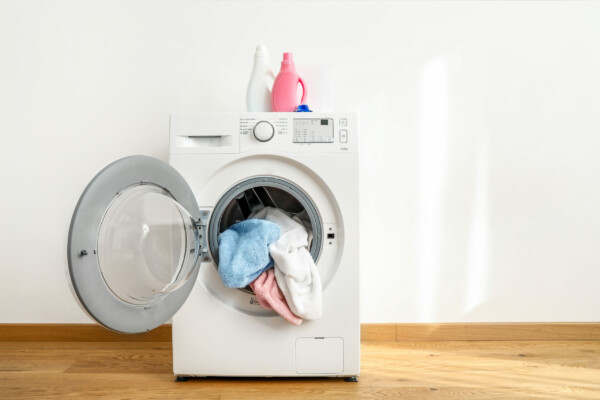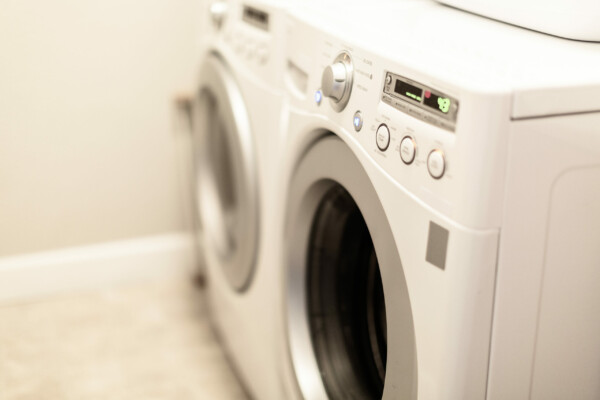What does E1 F9 Mean on a Whirlpool Washer?
When the F9 E1 Whirlpool washer error illuminates the control panel of your Whirlpool washer, it’s more than just a random sequence of letters and numbers. This error, often accompanied by the Whirlpool washer E1 F9 door locked light flashing, signals a significant issue with the washer’s ability to drain water. Let’s dive deeper into what this error means, why it occurs, and how you can fix it, ensuring your laundry routine gets back on track without a hitch.
What is E1 F9 Error Code?
At its core, the Whirlpool washer error code F9 E1 is an indicator that your washer is experiencing difficulties with draining. This problem can stem from various issues within the washer’s drainage system, which are crucial for its optimal operation. To resolve the Whirlpool washer code F9 E1, it’s essential to inspect and potentially replace components within the washer’s drainage system. However, if these components are not at fault, the error could be due to using the incorrect type of detergent, issues with the pressure switch and hose, or a malfunctioning main control board.
Key Components to Check
When faced with the Whirlpool front load washer F9 E1 error, several components should be your primary focus:
Detergent-Related Issues and Solutions
The choice of detergent plays a pivotal role in the functionality of your Whirlpool washer. Traditional detergents are notorious for creating a high volume of suds, which can trick the washer’s sensors into thinking there’s more water in the drum than there actually is. This sudsy illusion can prevent proper drainage, leading to the Whirlpool washer error code F9 E1.
Solution: Making the switch to high-efficiency (HE) detergent can drastically reduce suds, ensuring that your washer drains as expected. HE detergents are specifically formulated to produce fewer suds while still delivering a powerful clean. For washers already affected by suds buildup, running a cleaning cycle without any laundry and using a washer cleaner or vinegar can help clear out residual suds and detergent buildup, resetting your appliance’s internal environment.
Drain Hose Dilemmas
The path water takes to exit the washer is just as important as its cleaning cycle. A drain hose that’s kinked, crushed, or blocked can act like a cork on a bottle, trapping water inside.
Solution: Regularly inspect the drain hose to ensure it’s properly connected and positioned without any kinks or sharp bends. Should you discover a blockage, carefully removing and cleaning the hose can restore water flow. It’s also wise to secure the hose to prevent future kinks and ensure it’s not crushed by the washer’s weight or other objects.
Pump Filter Patrol
The pump filter is your washer’s last line of defense, catching debris before it can clog the drain system. Over time, however, this filter can become clogged itself, which can halt the drainage process and trigger the Whirlpool washer code F9 E1.
Solution: Locate your washer’s pump filter – often found behind a front panel or access cap – and gently remove it for cleaning. Washing it under running water and removing any visible debris can ensure it’s ready to protect your washer’s drainage system once more.
Pressure System Perplexities
The washer’s ability to gauge water levels accurately is crucial for proper operation. A malfunctioning pressure switch or a clogged pressure hose can misinform the control board, affecting the drainage cycle.
Solution: Inspecting the pressure hose for clogs or damage and ensuring it’s securely connected can prevent misreadings. Testing the pressure switch with a multimeter ensures it’s responsive and functioning correctly. If faults are found, replacing the defective component is necessary to restore proper function.
Drain Pump Diagnostics
The heart of the drainage system, a faulty drain pump, can lead to significant issues, including the Whirlpool front load washer F9 E1 error. A pump that’s unable to expel water effectively is often damaged or obstructed.
Solution: Visual inspection can reveal obstructions or damage. Using a multimeter to test the pump’s electrical resistance can confirm its condition. If the pump is found to be defective, replacing it is the most straightforward path to resolving drainage issues.
Addressing these components with the described solutions not only can fix current problems but also prevent future occurrences of the F9 E1 Whirlpool washer error, ensuring your appliance operates smoothly and efficiently.
Preventive Measures and Solutions
Preventing the Whirlpool duet e01 f09 error requires a blend of diligence and knowledge. You can take effective steps to ensure your appliance runs smoothly, avoiding disruptive errors and maintaining the longevity of your machine. Here are some insights and strategies:
Routine Check-up Schedule
Incorporating a routine maintenance schedule into your household chores can be a game-changer. This involves more than just a cursory glance:
- Monthly Inspections: Dedicate time each month to inspect the washer’s components. This includes checking the integrity of the drain hose, ensuring it’s secure and not showing signs of wear or damage. Similarly, the drain pump filter should be removed, inspected, and cleaned to remove any debris or lint that could impede water flow.
- Monitor Detergent Usage: It’s easy to overlook the impact of detergent on your washer’s performance. Using too much, even of the correct HE type, can still lead to suds build-up. Consider measuring detergent precisely according to the load size and washer recommendations. If you’re unsure, err on the side of using less; it’s easier to run a second rinse cycle than to fix a suds-related issue.
Installation and Placement Considerations
The initial installation of your Whirlpool washer can have long-term impacts on its performance:
- Strategic Positioning: Ensure your washer is positioned on a level surface. An uneven washer can cause undue stress on mechanical parts, leading to premature wear and potential drainage issues.
- Follow Installation Guidelines: Proper installation according to local regulations is crucial, especially concerning the drain hose’s height and distance from the drainage point. These regulations are designed to prevent backflow and ensure efficient drainage, which can mitigate the risk of errors like e01 f09.
Creating an Obstruction-Free Zone
The environment around your washer plays a significant role in its operation:
- Clear the Clutter: Regularly check around and behind your washer for objects that could press against the drain hose, potentially kinking or crushing it. Items left on top of the washer can vibrate towards the back during a cycle and inadvertently cause issues.
- Awareness and Adjustment: Be mindful of how household changes might affect your washer. For example, if you’re moving things around in the laundry room, double-check afterwards to ensure nothing has shifted in a way that could impact the washer’s hoses or electrical connections.
Adopting these preventive measures not only minimizes the risk of facing the Whirlpool washer code F9 E1 but also contributes to the overall efficiency and longevity of your appliance. Regular maintenance, proper use, and a keen eye for detail can save you from unexpected disruptions, keeping your laundry routine running smoothly.
Conclusion
The E1 F9 washer error is a solvable issue that, with a bit of know-how and effort, can be fixed, restoring your washer to its full functionality. By understanding the components involved and their role in the drainage process, you can diagnose and resolve the F9 E1 Whirlpool washer error efficiently. Remember, regular maintenance and proper usage are key to preventing future occurrences of this error, ensuring your Whirlpool washer runs smoothly for years to come.
Date of page creation: February 22, 2024
Page update date: March 20, 2024
Ask a Question



